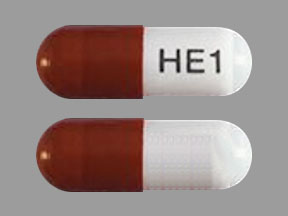Akynzeo Disease Interactions
There are 6 disease interactions with Akynzeo (netupitant / palonosetron).
- Severe hepatic impairment
- Severe renal impairment
- Liver impairment
- Renal impairment
- End stage renal disease
- Hepatic impairment
Fosnetupitant (applies to Akynzeo) severe hepatic impairment
Moderate Potential Hazard, Moderate plausibility. Applicable conditions: Liver Disease
Limited data are available with fosnetupitant (only available in combination with palonosetron in the US) in patients with severe hepatic impairment (Child-Pugh score greater than 9), therefore, its use should be avoided in these patients. No dosage adjustment is necessary for patients with mild to moderate hepatic impairment (Child-Pugh score 5 to 8).
References
- (2018) "Product Information. Akynzeo for Injection (fosnetupitant-palonosetron)." Helsinn Therapeutics Inc
Fosnetupitant (applies to Akynzeo) severe renal impairment
Moderate Potential Hazard, Moderate plausibility. Applicable conditions: Renal Dysfunction
No dosage adjustment for netupitant/fosnetupitant (only available in combination with palonosetron in the US), is necessary in patients with mild to moderate renal impairment (creatinine clearance of 30 to 60 mL/min). The pharmacokinetics and safety of netupitant/fosnetupitant have not been studied in patients with severe renal impairment. Severe renal impairment (creatinine clearance < 30 mL/min) did not substantially affect pharmacokinetics of palonosetron. The pharmacokinetics for netupitant and palonosetron were not studied in patients with end-stage renal disease requiring hemodialysis, therefore, avoid the use of this drug in patients with severe renal impairment or end-stage renal disease.
References
- (2018) "Product Information. Akynzeo for Injection (fosnetupitant-palonosetron)." Helsinn Therapeutics Inc
Netupitant (applies to Akynzeo) liver impairment
Moderate Potential Hazard, Moderate plausibility. Applicable conditions: Liver Disease
Netupitant is extensively metabolized to form three major metabolites: desmethyl derivative, M1; N-oxide derivative, M2; and OH-methyl derivative, M3. Metabolism is mediated primarily by CYP450 3A4 and to a lesser extent by CYP450 2C9 and CYP450 2D6. Care should be exercised when using this agent in patients with hepatic impairment. In patients with mild or moderate hepatic impairment, the mean AUC from zero to infinity (AUCinf) of netupitant was 67% and 86% higher, respectively, than in healthy subjects and the mean Cmax for netupitant was about 40% and 41% higher, respectively, than in healthy subjects. Avoid use in patients with severe hepatic impairment.
References
- (2014) "Product Information. Akynzeo (netupitant-palonosetron)." Eisai Inc
Netupitant (applies to Akynzeo) renal impairment
Moderate Potential Hazard, Moderate plausibility. Applicable conditions: Renal Dysfunction
Population pharmacokinetic analysis showed that mild and moderate renal impairment (creatinine clearance 30 to 60 mL/min) did not significantly affect the pharmacokinetics of netupitant. The pharmacokinetics and safety of netupitant have not been studied in patients with severe renal impairment. Avoid use in patients with severe renal impairment or end-stage renal disease.
References
- (2014) "Product Information. Akynzeo (netupitant-palonosetron)." Eisai Inc
Palonosetron (applies to Akynzeo) end stage renal disease
Moderate Potential Hazard, Moderate plausibility. Applicable conditions: Renal Dysfunction
Mild to moderate renal impairment does not significantly affect palonosetron pharmacokinetic parameters. However, total systemic exposure increased approximately 28% in patients with severe renal impairment. Additionally, the pharmacokinetics of palonosetron have not been studied in patients with end-stage renal disease. Caution is advised.
References
- (2003) "Product Information. Aloxi (palonosetron)." MGI Pharma Inc
Palonosetron (applies to Akynzeo) hepatic impairment
Moderate Potential Hazard, Moderate plausibility. Applicable conditions: Liver Disease
No dosage adjustment for palonosetron is necessary for patients with mild to moderate hepatic impairment (Child-Pugh score 5 to 8). Limited data are available in patients with severe hepatic impairment (Child-Pugh score greater than 9). It is recommended to avoid use of palonosetron in patients with severe hepatic impairment.
References
- (2014) "Product Information. Akynzeo (netupitant-palonosetron)." Eisai Inc
Akynzeo drug interactions
There are 558 drug interactions with Akynzeo (netupitant / palonosetron).
More about Akynzeo (netupitant / palonosetron)
- Akynzeo consumer information
- Check interactions
- Compare alternatives
- Pricing & coupons
- Drug images
- Side effects
- Dosage information
- During pregnancy
- FDA approval history
- Drug class: miscellaneous antiemetics
- En español
Related treatment guides
Drug Interaction Classification
| Highly clinically significant. Avoid combinations; the risk of the interaction outweighs the benefit. | |
| Moderately clinically significant. Usually avoid combinations; use it only under special circumstances. | |
| Minimally clinically significant. Minimize risk; assess risk and consider an alternative drug, take steps to circumvent the interaction risk and/or institute a monitoring plan. | |
| No interaction information available. |
Further information
Always consult your healthcare provider to ensure the information displayed on this page applies to your personal circumstances.


